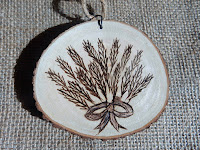Why Read the Old Testament (and other questions you have asked)
This week we finish with the first five books of the Bible – called the Torah (meaning “Teaching” or “Law”). In less than two months, we have read Genesis, Exodus, Leviticus, Numbers, and Deuteronomy. The Bible Year has been a real blessing for our church and especially for all who have committed to doing the readings each day. Well done!
One question that was asked a couple weeks ago in our Bible Study was “Why do Christians need to read the Old Testament?” That is a great question and a common one when we encounter “its harsh moral codes and ancient cultural norms (that) come across today as obsolete at best, barbaric at worst.” You may share a similar sentiment and be asking the same question.
I gave the best answer I could at the time, but felt there was more that needed to be said. I came across an article by Brent A. Strawn, professor of Old Testament at Duke Divinity School: We Need to Read the Bible Jesus Read. Strawn is an ordained minister in The United Methodist Church and regularly speaks and preaches at churches across the country. His answer is far better than mine, so I commend his article to you (click here)
Some of the best questions we have had in Bible study are about the odder stories from the Old Testament. One such passage was way back in Exodus 4:24-26 when Moses and his family are on their way back to Egypt. The Lord met Moses and tried to kill him. We think. This passage is notoriously difficult both to translate and to understand. One view is that God intercepts Moses and seeks to kill Moses’s son Gershom because he is uncircumcised. And yet in the scripture itself, no motive is given for the attack and it seems Moses is the target, not his son (and even that is not clear in the Hebrew). One commentary simple states, “As it stands, the story has become a vehicle for explaining the expression ‘bridegroom of blood’ or ‘son-in-law of blood,’ which was current in the time of the writer, but is obscure to us.”
Another great question was about the background of Balaam the non-Israelite prophet hired by Balak, the king of Moab, to curse the Israelites. Balaam is one of those ancient figures whose fame and reputation extended beyond our own scriptures. In 1967, archaeologists found a non-Biblical inscription with a story relating visions of the seer of the gods Bala'am, son of Be'or, who may be the same Balaam mentioned in the Bible. That Bala’am was associated with Ashtar-Chemosh, a goddess worshipped by the ancient Moabites. That goddess may have been their version of an ancient goddess worshipped by many peoples in the ancient near east, including the Sumerians, Babylonians, and Assyrians. She was called by various names - Astarte, Ishtar, and Inanna.
Obviously, in our scriptures we are given none of those details, although the ancient Israelites would have likely known far more about him hence his prominence in the Bible. In Numbers 22-24, Balaam is shown in a positive light, blessing Israel instead of cursing them. That story demonstrates God’s protection of the Israelites. And yet in the New Testament, he is cast in a negative light, portrayed as a prototype of false prophets and teachers (2 Peter 2:15; Jude 11; Revelation 2:14).
Keep bringing those questions from the readings to Bible Study! Or send them to me via email. You would be amazed what I can dig up between all my commentaries and the internet.
A few notes and reminders:
- Our Pastor's Bible Study meets every Wednesday night at 5:30 pm in-person (FLC) and online (Zoom).
- The Friends Sunday School Class is also following The Bible Year and have a great group! They meet at 10 am in Room #31.
- I also encourage you to join the Ocala FUMC The Bible Year Small Group on Facebook. The group allows for ongoing discussion, especially for those whose schedule doesn’t allow for attending a weekly class.
- The Sunday sermons may be a helpful resource as we move through the readings. You can watch the full sermon on YouTube (CLICK HERE)
- Remember to check our website regularly for additional resources and updates (CLICK HERE)
- Remember the great teaching videos at The Bible Project!
- The Bible Year videos on Amplify are also a great place to find weekly summaries of our readings.



Comments
Post a Comment